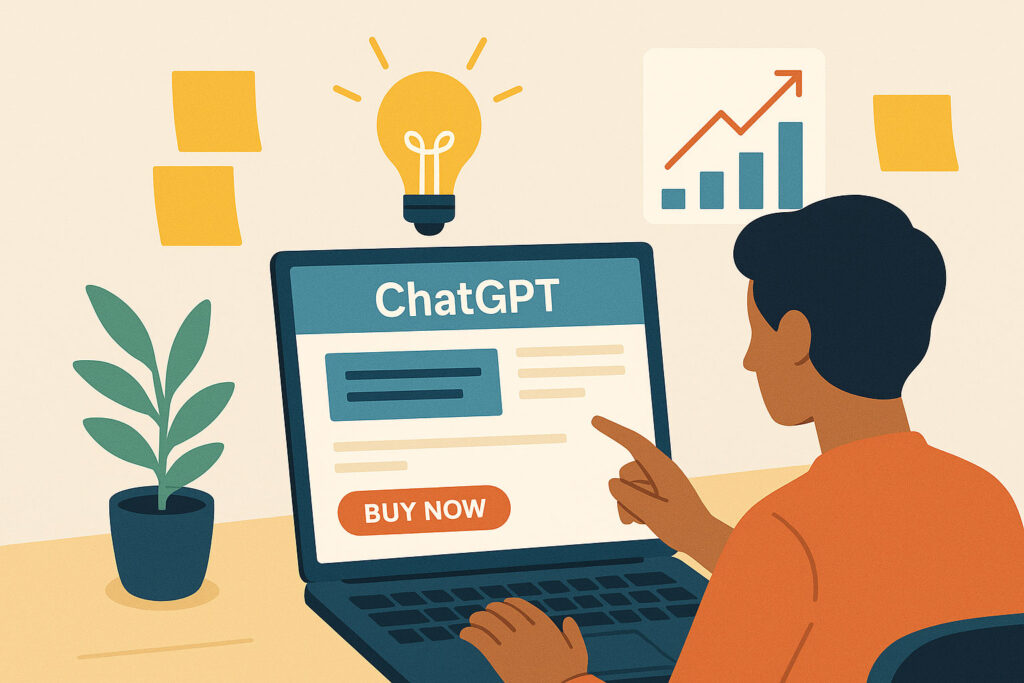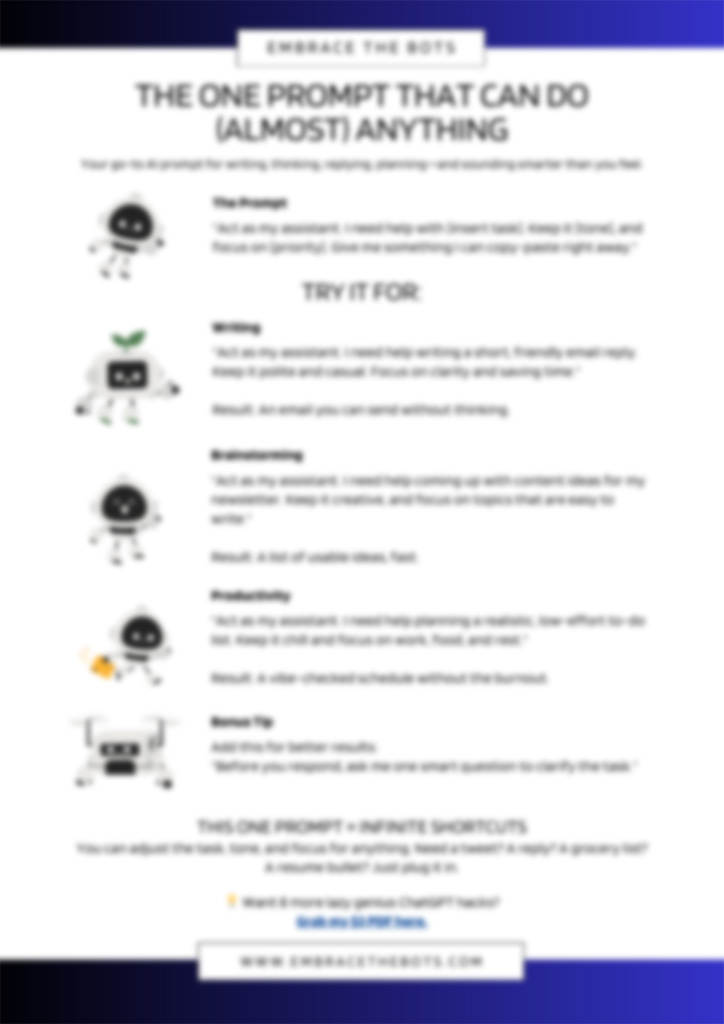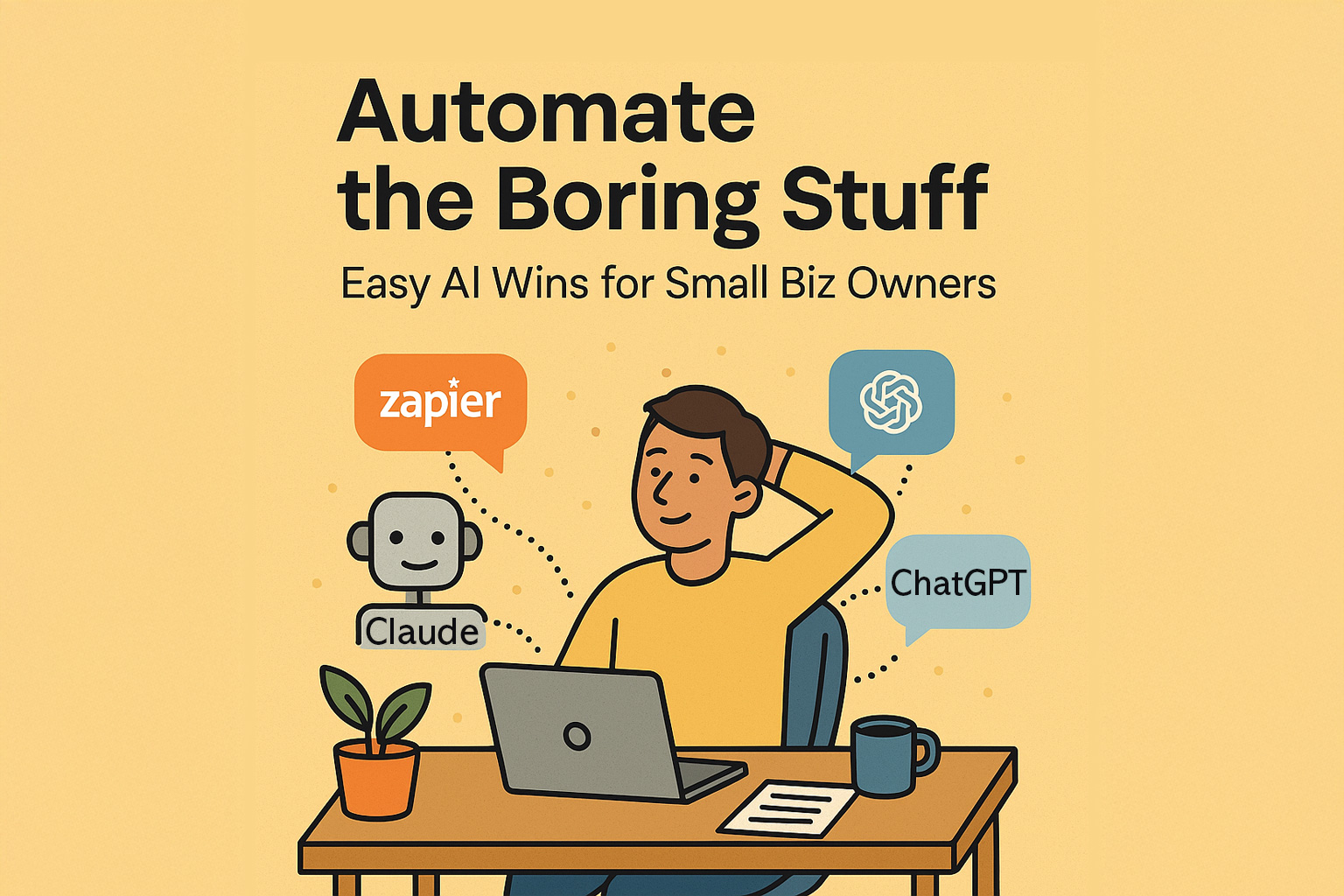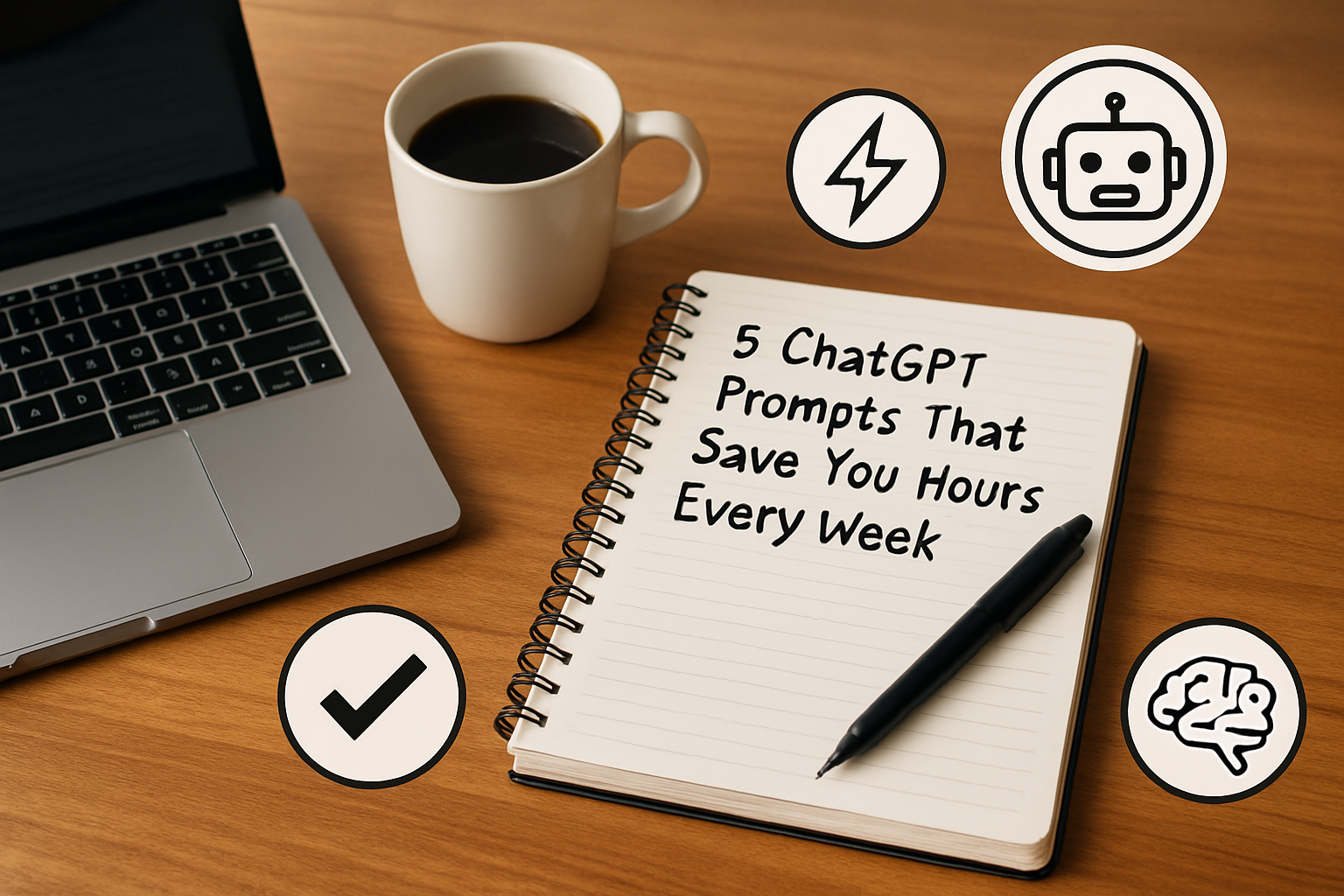Sales copy is the lifeblood of digital marketing. Whether you’re building a landing page, launching a product, or writing a punchy CTA, your words need to persuade fast. That’s where ChatGPT comes in. With the right prompts, it can help you brainstorm, refine, and write compelling copy without sounding robotic or generic.

This guide breaks down how to use ChatGPT to write sales copy that actually converts. We’ll walk through prompt strategies for three critical areas: landing pages, product blurbs, and calls-to-action. You’ll learn what to ask, how to tweak responses, and when to add your brand’s human touch.
No fluff. No jargon. Just smart ways to get better copy, faster.
Why Use ChatGPT for Sales Copy?
ChatGPT is more than a time-saver, it’s a creative partner. Marketers use it to overcome blank-page syndrome, explore alternative phrasings, and test multiple versions of copy quickly. But the real power comes when you guide it with the right context and goals.
Here’s what makes ChatGPT effective for sales copywriting:
- Speed and volume: You can generate 10 variations of a headline or value prop in seconds
- Creative angle shifts: It helps you see your offer from different perspectives, ideal for A/B testing
- Clarity checks: You can ask it to simplify language, rewrite in plain English, or match a specific tone
According to HubSpot’s 2024 AI in Marketing report, 64% of marketers now use AI tools like ChatGPT to write or edit content. But success doesn’t mean letting the AI do everything, it means asking smarter questions.
That’s where prompting comes in.
Prompting ChatGPT for Landing Pages
Landing pages need to do three things quickly: grab attention, build trust, and push action. ChatGPT can help generate each part, from headline to CTA. Here are a few proven prompts to try:
1. For your hero headline:
"Write 5 landing page headlines for a [product/service] that help [audience] solve [problem] fast."
Example: “Write 5 landing page headlines for a time-tracking app that helps remote freelancers get paid faster.”
2. For feature or benefit sections:
"List the top 3 benefits of [product], written in a persuasive tone for a [target audience]."
Example: “List the top 3 benefits of our digital planner, written for busy moms managing multiple schedules.”
3. For social proof or testimonials:
"Write a short testimonial from a happy customer who used [product] and saw results in 2 weeks."
Pro tip: Always give ChatGPT clear context. Mention your audience, tone, product, and the problem you’re solving.
Next, we’ll look at writing product blurbs that sell, whether for ecommerce, email, or social posts.
Writing Product Descriptions with ChatGPT
Strong product blurbs don’t just list features, they connect with what your customer actually cares about. ChatGPT can help you shift from technical specs to benefit-driven copy that converts.
Try these prompt examples to shape more persuasive product descriptions:
1. For a benefit-focused blurb:
"Write a 3-sentence product description for [product], focusing on how it solves [problem] for [audience]."
Example: “Write a 3-sentence product description for an ergonomic standing desk, focusing on how it reduces back pain for remote workers.”
2. For tone customization:
"Rewrite this product description in a friendly, confident tone: [paste current copy]"
3. For multiple style options:
"Give me 3 variations of this product description—one professional, one playful, and one minimalist."
ChatGPT can also help you test different formats like bullet points, one-liners for social media, or expanded descriptions for Amazon listings. The key is to steer it with details. Be specific about your product, your audience, and the feeling you want the copy to evoke.
Crafting High-Converting CTAs
Your call-to-action (CTA) is where clicks turn into conversions. Whether it’s “Buy Now,” “Learn More,” or “Start Free Trial,” your CTA needs to feel natural and motivating. ChatGPT can help you punch it up or personalize it based on context.
Here are some prompt templates to try:
1. For tailored CTAs:
"Write 5 call-to-action buttons for a [type of product] aimed at [audience], encouraging them to [desired action]."
Example: “Write 5 call-to-action buttons for a budgeting app aimed at college students, encouraging them to start saving today.”
2. For urgency and scarcity:
"Make this CTA more urgent: [paste CTA]"Example: “Make this CTA more urgent: Get started now.”
3. For value-focused CTAs:
"Write 3 CTAs that highlight the value of [product or offer], using action words."
And remember: ChatGPT is great at brainstorming options, but your best results come from testing. Try different versions in your email footer, landing page button, or Instagram bio link to see what actually performs.
Final Tips and Takeaways
Using ChatGPT for sales copy is about collaboration, not automation. You bring the brand, the tone, and the goals. ChatGPT brings speed, variety, and structure. Together, you can create high-performing copy faster and with less friction.
Before you hit publish, always:
- Review and lightly edit for brand voice
- Add any missing emotional or sensory language
- Test different versions of your headlines, blurbs, and CTAs
With practice and smart prompting, you’ll spend less time staring at a blank screen and more time closing the deal.
📚 Reference List:
- HubSpot’s 2024 State of Marketing Report
According to HubSpot’s 2024 State of Marketing Report, 64% of marketers already use AI and automation tools in their workflows. - Jasper.ai’s Analysis of HubSpot’s 2024 State of Marketing Report
The report highlights that 64% of marketers already use generative AI tools like chatbots.




0 Comments